Basic maintenance or How to keep your scooter in good shape
| Vendula KosíkováIn order for scooters to be able to bring you joy from riding for a long time, they need a little care and attention. In this article, you will find a brief guide to basic maintenance, which every rider can manage. Let’s go.
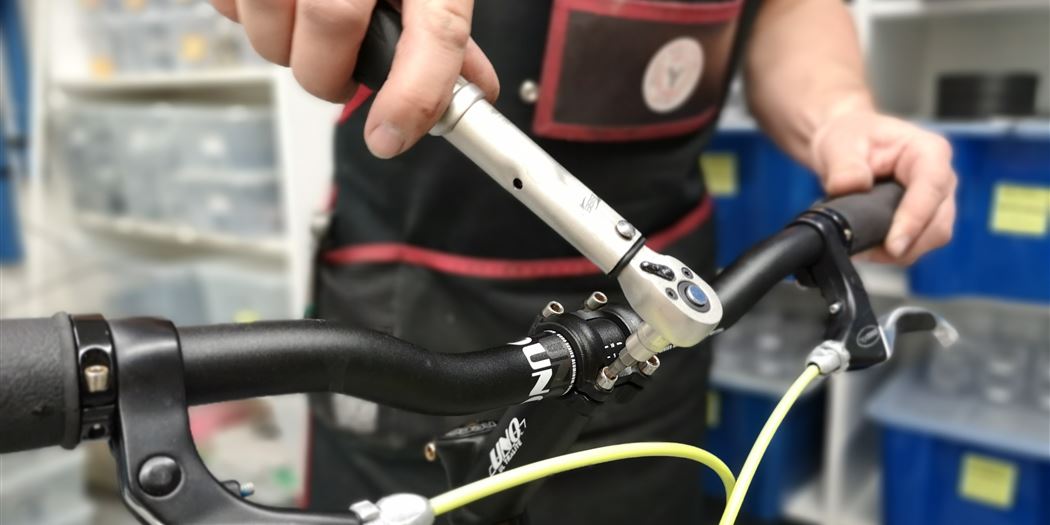
Tightening the joints
Do you have a new scooter?
If you have a new machine at home, sit up and listen. During the first 100 to 150 kilometres, the scooter, similarly to a car, undergoes the running-in period, when the components settle against one another. After this period has ended, it is important to adjust the scooter again (fasten all moving joints, inflate the tyres, tighten the spokes in the wheels, check the state of self-locking nuts, etc.)
From time to time, preferably before every tide, check, if all joints and bolts are tightened properly. While it will only take you several minutes, it will significantly increase your safety and the durability of the scooter.
You should pay attention especially to the bolts on the stem, the quick-release levers (in case of kids’ scooters, the nuts) and also to all joints of the brake system. Also, do not forget to check, if the stand is attached well.
Checking and adjusting the headset
Smooth turning of the handlebar is ensured by the headset, which connects the front fork to the frame. You will find two types of headsets in Yedoo scooters – a threaded one and the A-head.
With the A-head headset
Threaded headset
Threaded headset can be adjusted using the nuts on the fork pipe. You will need two special thin keys for this, though (size 32 mm for kids scooters and 36 mm for adult scooters and for the Frida&Fred scooter). Not many people have these keys at home and we therefore recommend leaving adjustment of the threaded headset to experts in a service shop.
With the A-head headset, you will fine-tune smooth running of the handlebar using the screw on the upper lid of the headset. It should neither be tightened too little, nor too much. You can recognize looseness by the tapping in the head pipe, which will be heard when you brake the scooter using the front brake and rock the handlebar to the front and to the back. A screw that is tightened too much, on the other hand, prevents smooth operation of the handlebar.
To tighten/loosen the screw, you will need hex key number 5.
Attention: Before you begin tightening the screw on the upper lid of the headset, you need to loosen the smaller side screws on the socket of the stem. You can find detailed instructions in the user guide.
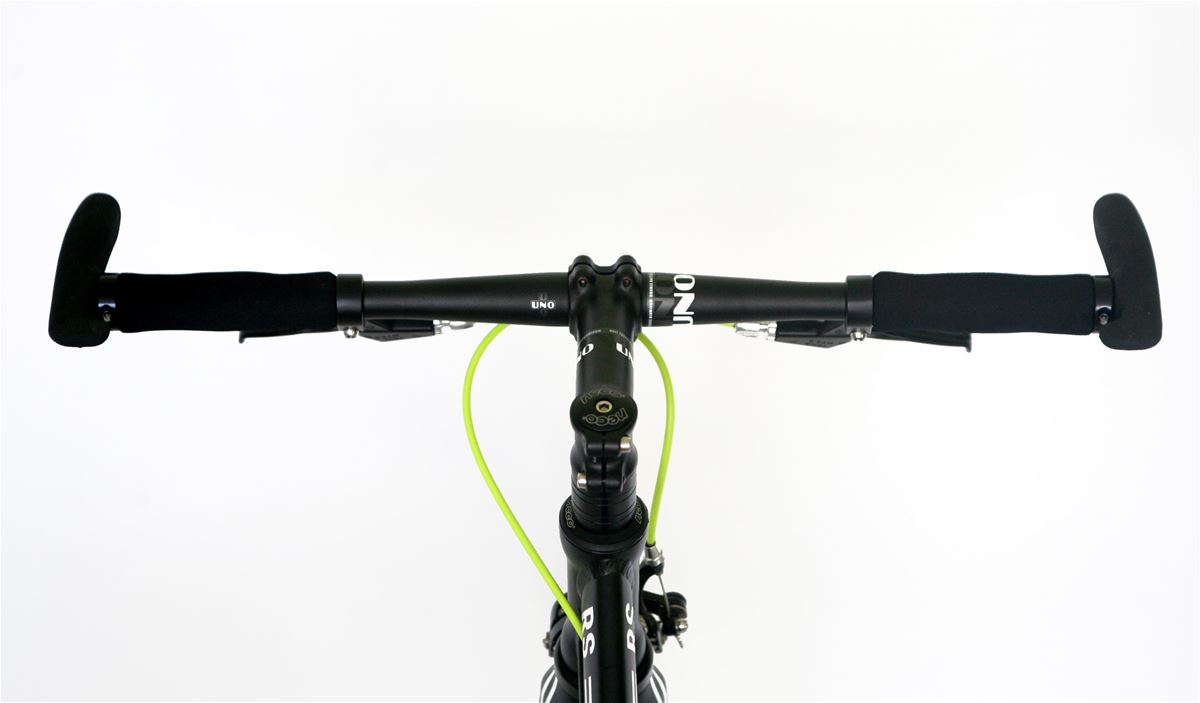
Quick-release levers
Before every ride, have a look at the quick-release levers, too (for child scooters the nuts in the axles of the wheels). Loosened levers (nuts) may cause clatter or loss of a wheel.
When tightening them, make sure the wheels sit in the fork exactly in the middle, so that they would not wobble sideways or upwards by more than 1 mm when turning. Wheel “wobbling” can best be recognized when you look at a spinning wheel in the place of the brake pads.
Wheel wobbling may also be caused by unevenly tightened spokes. Spokes are mainly loosened by riding on uneven ground.
If none of the above help to mend it, we recommend that you take the scooter to a service shop.
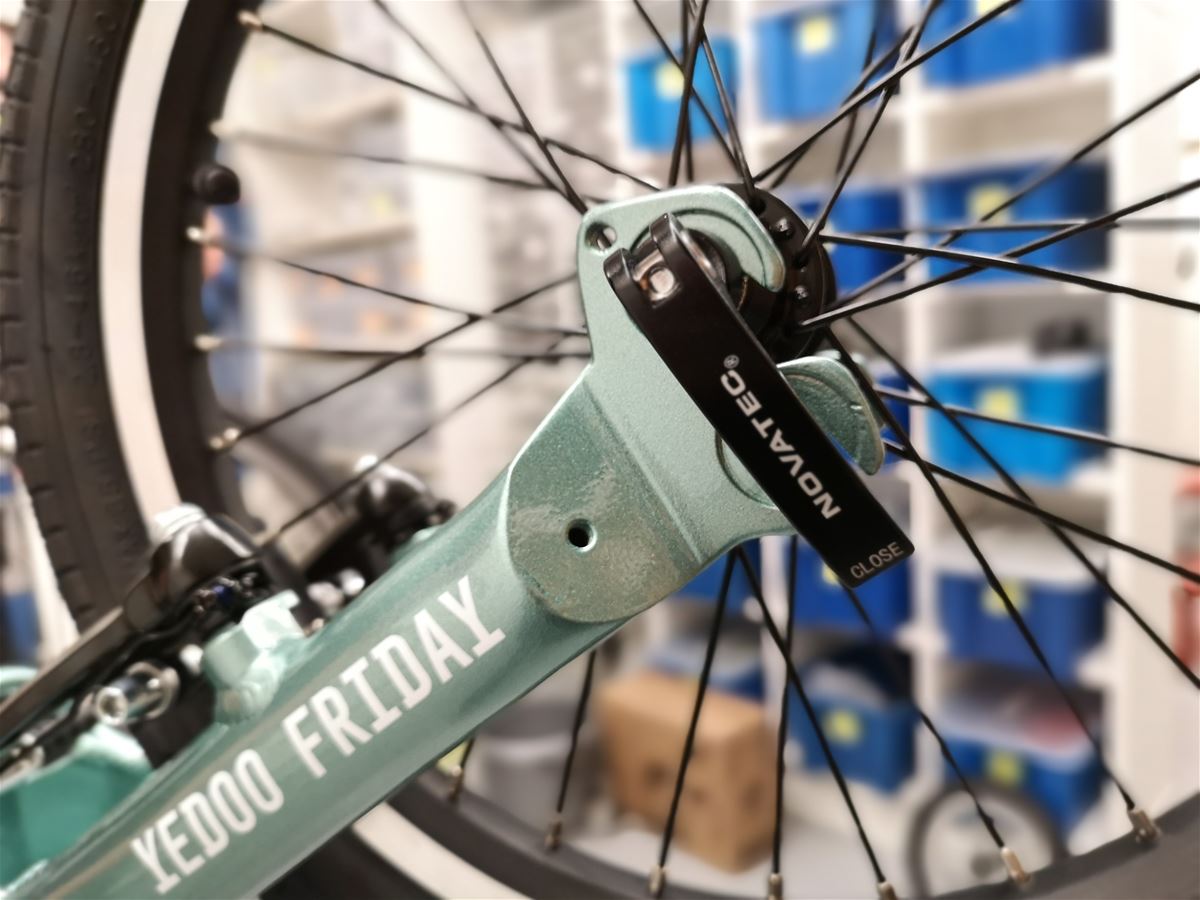
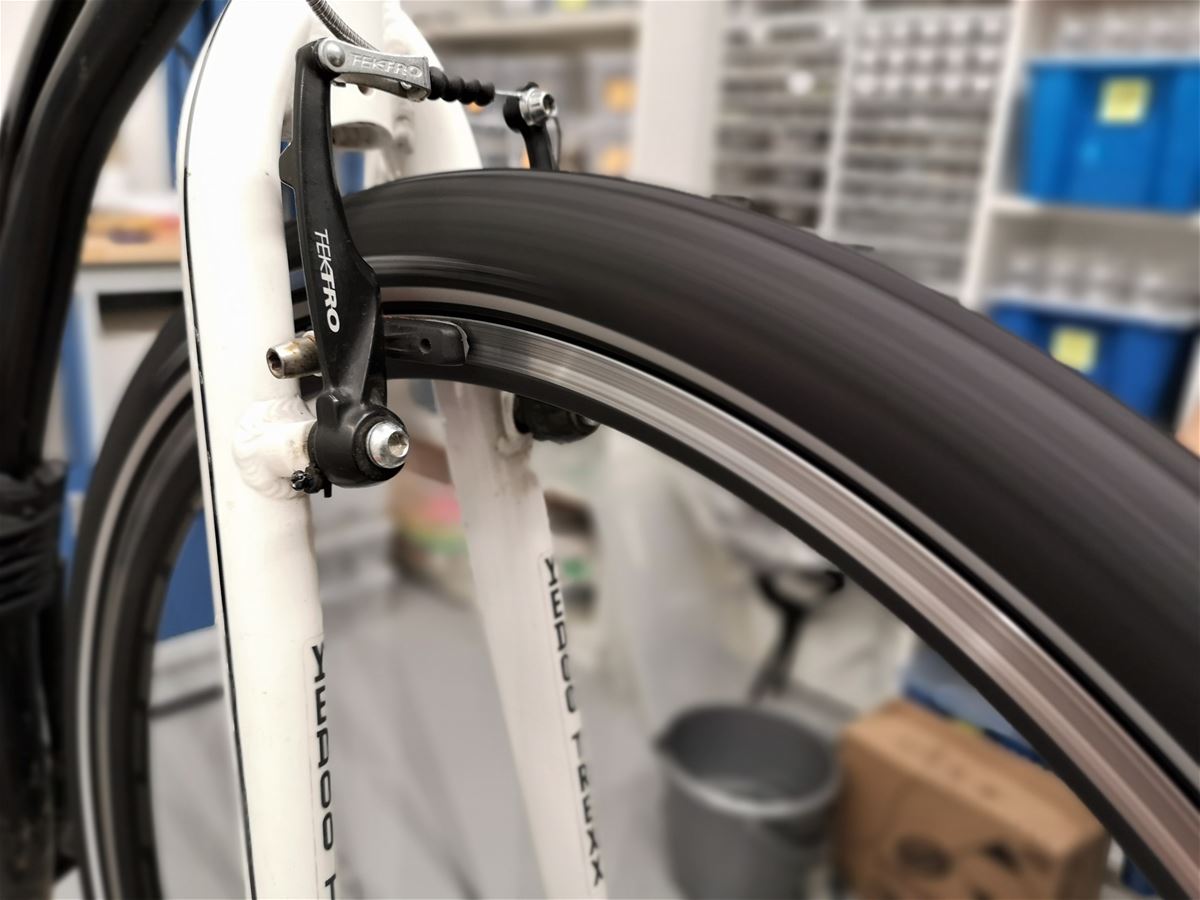
Checking the brakes
Before every ride, check the state of the brakes as well. Check their correct functioning and the wear-out of the brake pads.
Adjusting brake levers
The brake levers should work in the first half of the pull already. If the lever can be pulled all the way to the handlebar, it is a sign saying the brakes are not alright. In this case, to improve their functioning, it is sufficient to tighten or shorten the brake wire.
Both levers should work in the same position. You can find a detailed guide to adjusting brakes in the user guide again.
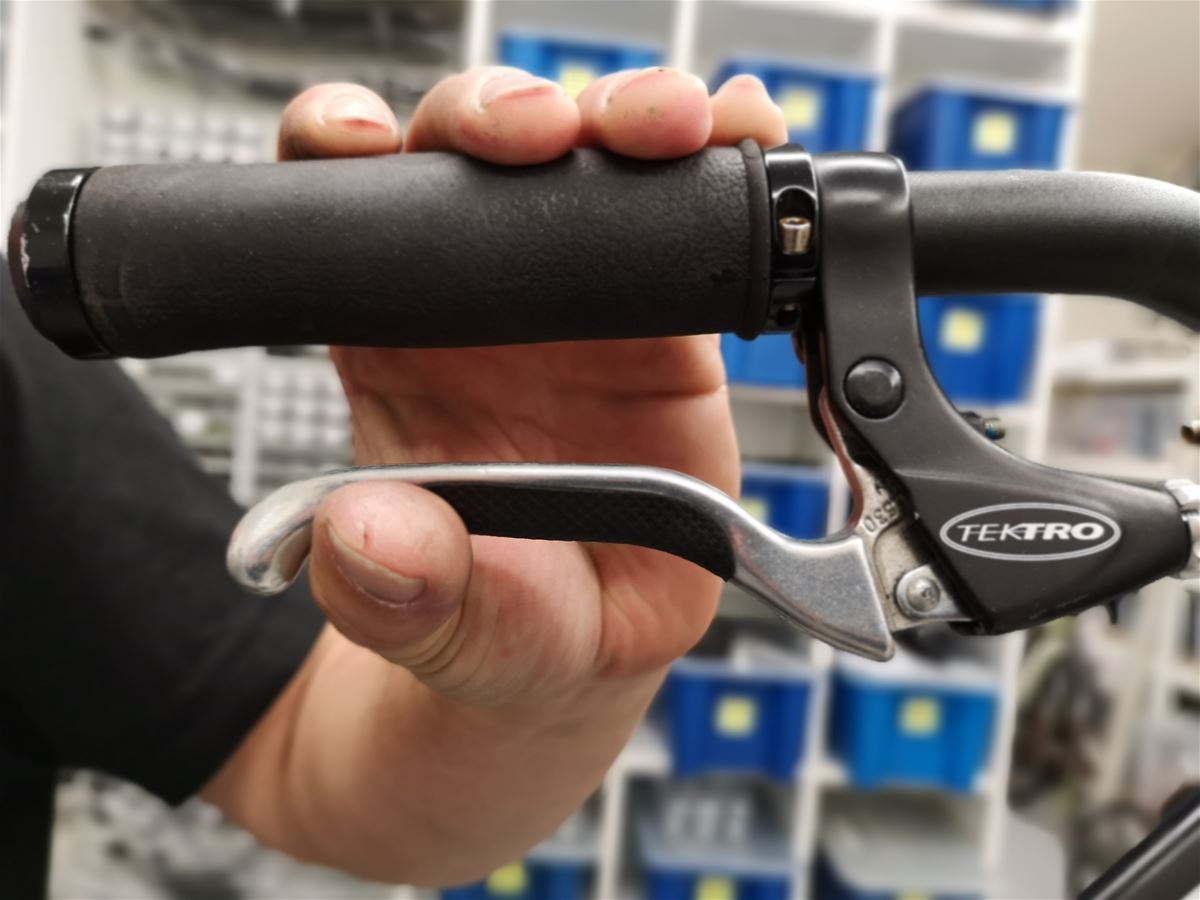
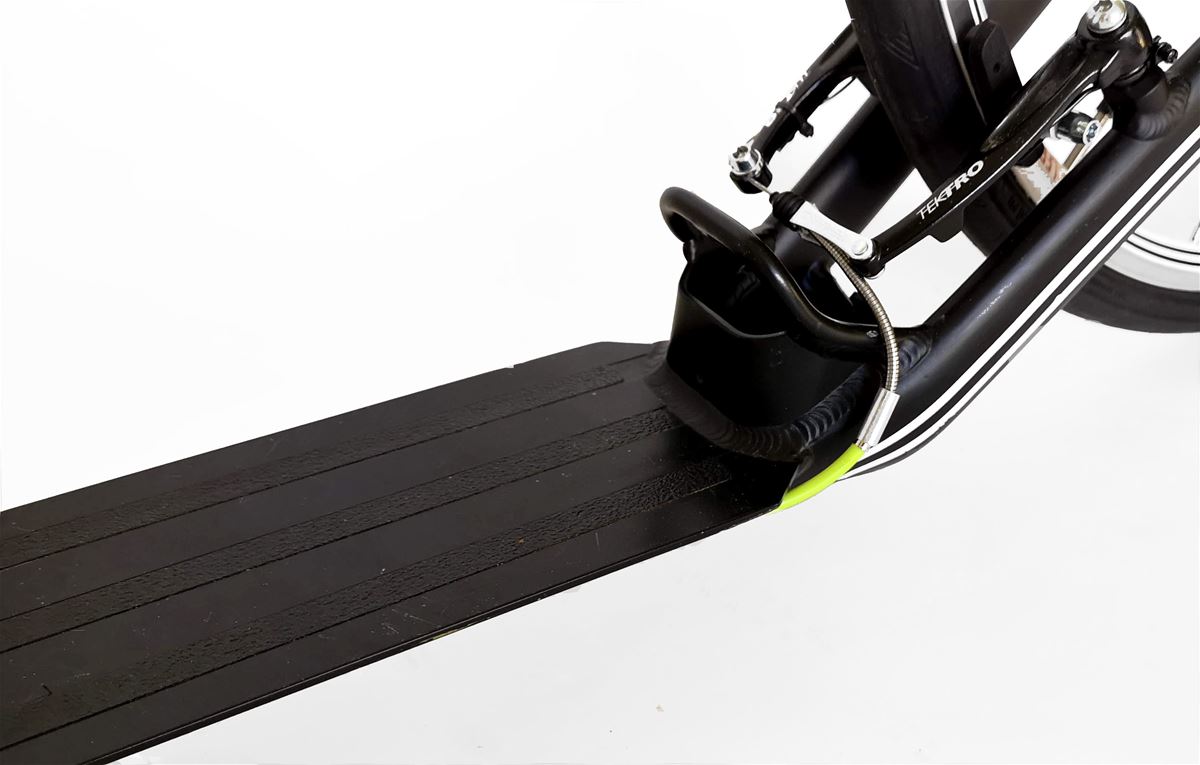
Checking the V-brake
If the brake pads are sufficiently high, it suffices to check, if they touch the brake area of the rim with their entire surface when braking, and if they back off sufficiently, when the brake lever is released. If not, it is necessary to put the brake pads in the right position. You can find detailed instructions in the user guide.
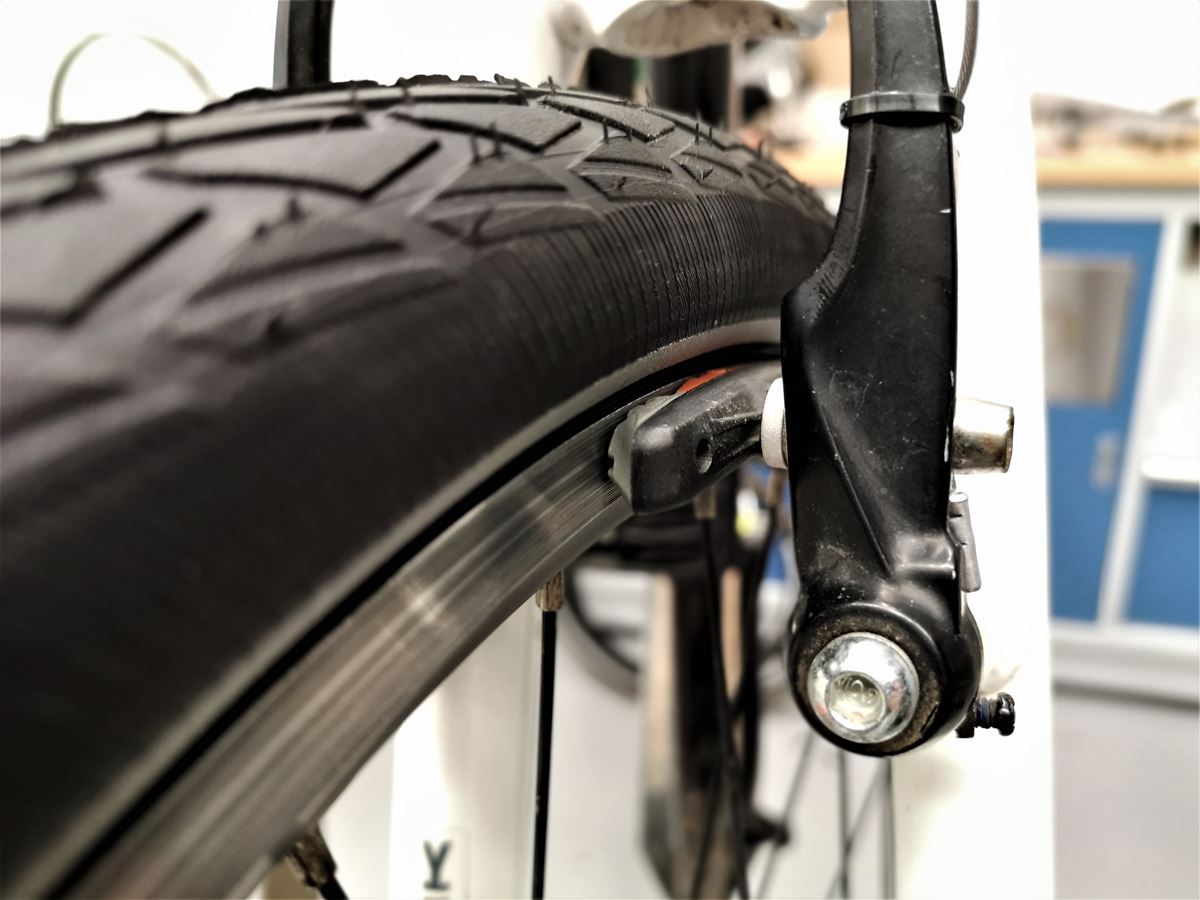
Mechanic disc brakes
The disc-brakes require nearly no maintenance, it is sufficient to monitor, if they function correctly. It is undesirable for the wire to be loose, or for the discs to scrape on the pads. We recommend leaving the servicing and repair of disc brakes to experts.
You can prevent defects of the disc brakes, which are more susceptible to mechanical damage, by correct use: Be careful about mechanical collisions and when transporting the scooter, do not put it down on the side, on which the brake discs are located.
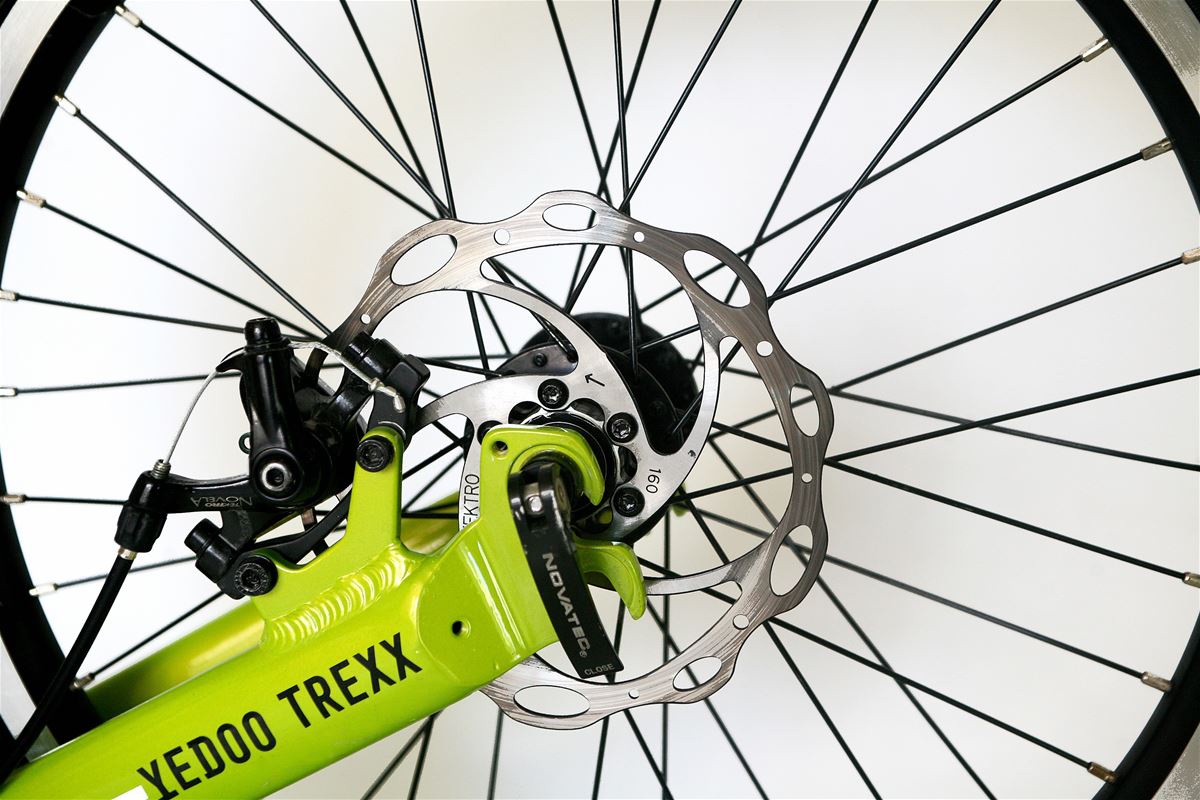
Inflating the tyres
An important factor, which has a fundamental influence on the feeling about the ride, is the pressure in the tyres. Therefore, touch them to check them before every ride. When inflating the tyres, follow not only the recommended data, which you will find on the side of every tyre, but take into account the weight of the rider and the type of riding surface as well. In any case always keep within the recommended range.
In general, higher pressure is more suitable for greater weight, asphalt and less experienced riders. If you are about to go off road, it pays off to lower the pressure in the tyres slightly. Higher pressure reduces adhesion of the tyre to the surface of the terrain and the scooter becomes more difficult to control. Underinflated tyres, on the other hand, bring a greater risk of defect and worse manoeuvrability.
If you do not have a pressure gauge at home, you had better take the scooter to the nearest petrol station. For the times, when you will have to follow your estimate alone, remember, how hard the tyre felt to the touch when inflated to the maximum and to the minimum.
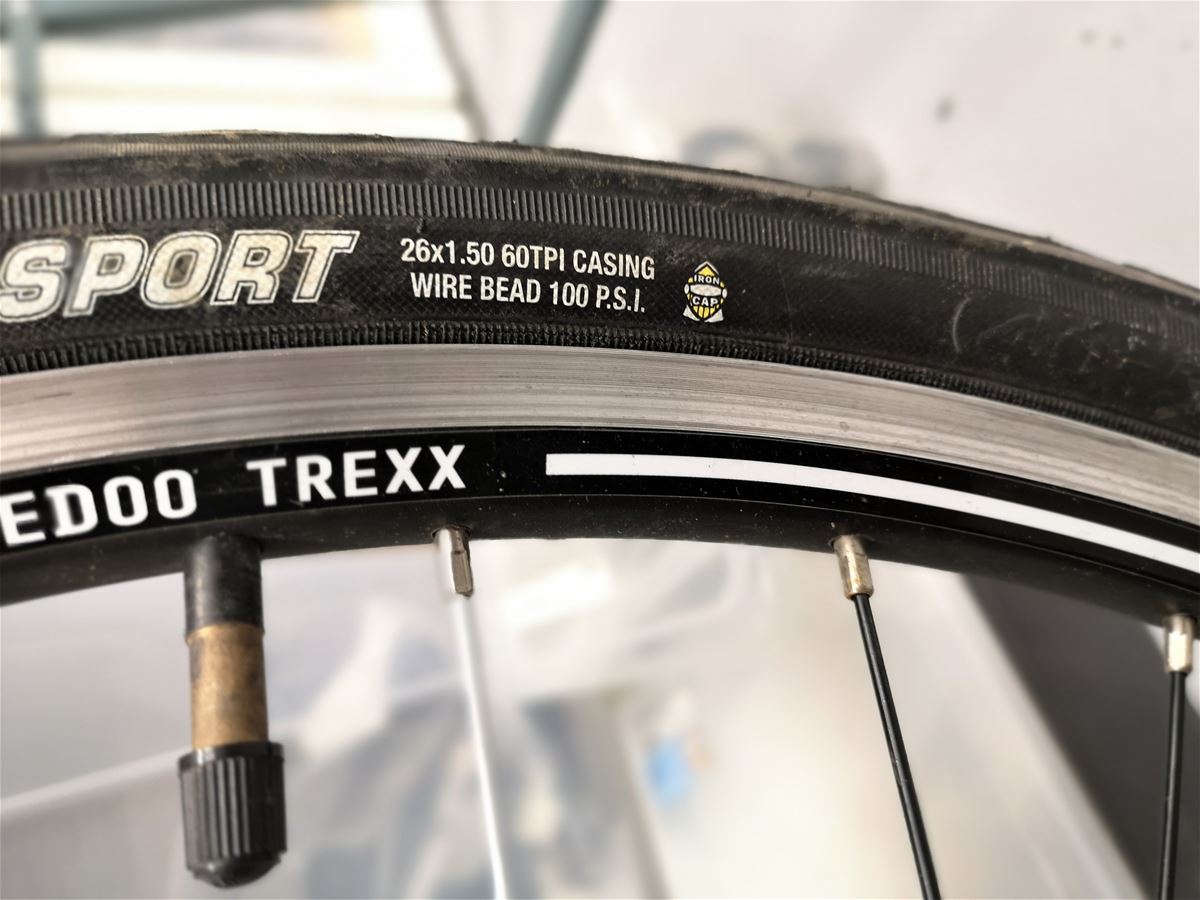
The state of the tyres
Check the height of the pattern on tyres regularly, and if it is lowering rapidly or if in some places the canvas or fibres are even showing, exchange the tyres for new ones. When checking, see if there are not any cracks on the tread and the sides of the tyre, which might cause unexpected tear of the tyre when riding and thus increase the risk of an accident.
Wheel hub bearings
Wheel hub bearings ensure that the wheel turns smoothly with minimum friction when riding, so you can travel as far as possible with one push-off. The bearings in adult scooters are mostly industrial ones, and therefore dustproof and watertight, and require no maintenance.
The functioning of conical bearings in child scooters may be lowered by dust and other dirt. Therefore, if it seems to you that they are not turning the same way they were at in the beginning any more, take the scooter to expert, who will clean the bearings professionally.
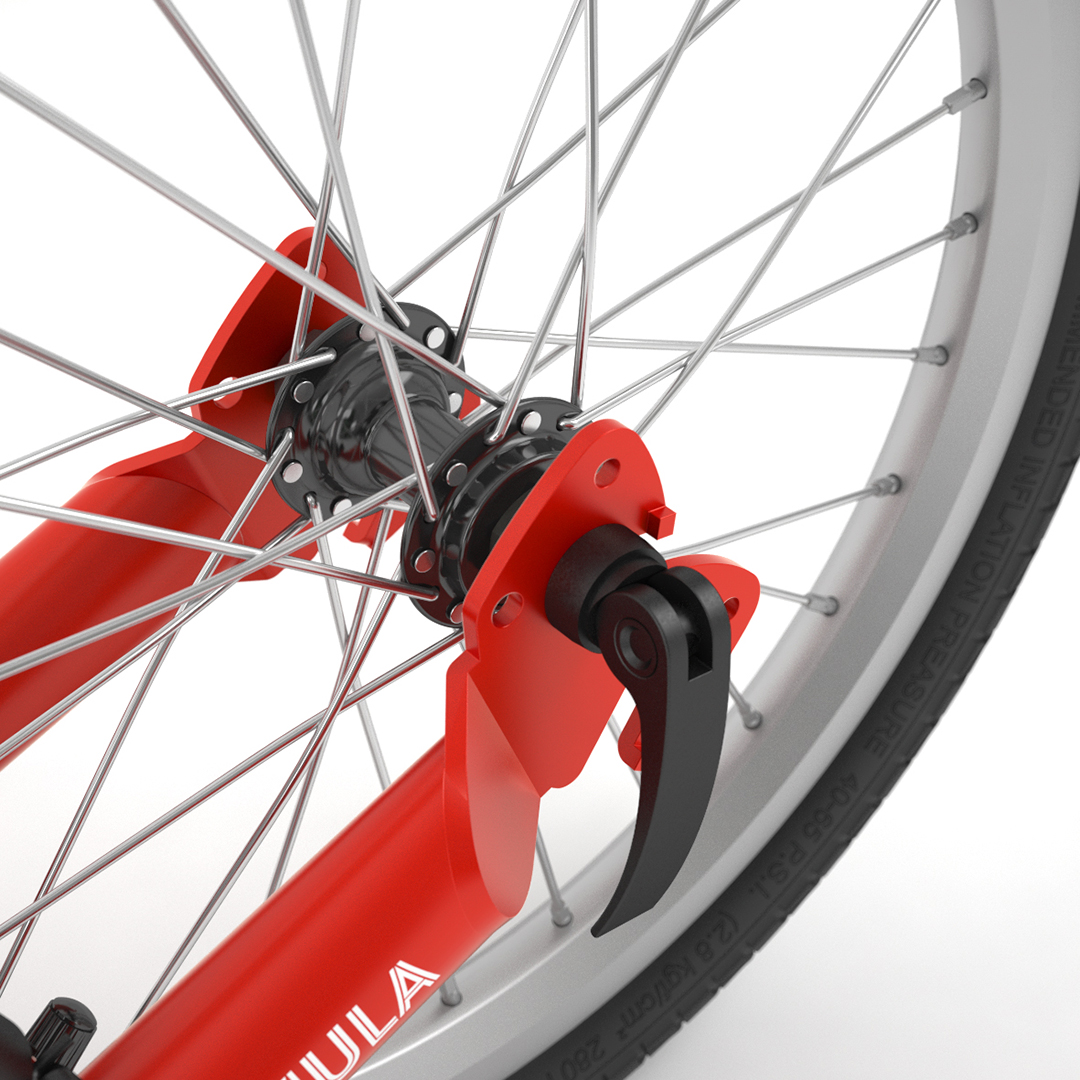
Greasing the moving joints
Greasing or not greasing the moving joints
Be careful about greasing the bearings and the headset. Only the conical bearings, with which mainly child scooters and balance bikes are equipped, should be greased. Before greasing, they first need to be dismantled and cleaned with petroleum benzine, and then greased with vaseline.
The industrial bearings, which most adult Yedoo scooters have, require no maintenance, because they are dustproof and watertight.
There is a good reason for the saying: to make the cart go, you must grease the wheels. Therefore, grease the bearings of the wheels and handlebar from time to time, the pins of the brake levers, the brake jaws, brake wires etc. Silicone oil is the best, but make sure it does not get on the rims and brake pads. Grease reduces their effect! If it happens, remove grease from them, using petroleum benzine, for example.
P.S.: You can find out what bearings your scooter/balance bike has in the technical parameters at www.yedoo.cz.
How to deal with a scratched underframe
Why (not) to worry about corrosion
The production technology of the steel frames of Yedoo scooters also includes the so-called phosphatizing, which is a form of anti-corrosive protection. Besides, if water get inside the frame, as a result of air humidity or due to riding in wet weather, for example, it can flow out again through draining ducts, which can be found inside the frame.
You need not worry about the underframe of the scooter, it is prepared for scrapes and scratches. On the contrary, scrapes and scratches on the bottom of the footboard decorate a scooter similarly to stamps adorning a traveller’s suitcase.
A scratched undercarriage or any rust on the surface have no impact on solidity or riding performance of the scooter. In the case of steel models, rust will be wiped off and cleaned away by further riding.
Aluminium frames are known not to have oxidation in their nature and besides, they are thoroughly prepared for scraping against bumps. They have three millimetres of extra material intended for rubbing down, in the form of narrow longitudinal “strips”. These minimise the area of contact with the terrain, and according to our tests, you will travel approximately 8,000 km before you manage to rub down 0.5 mm.
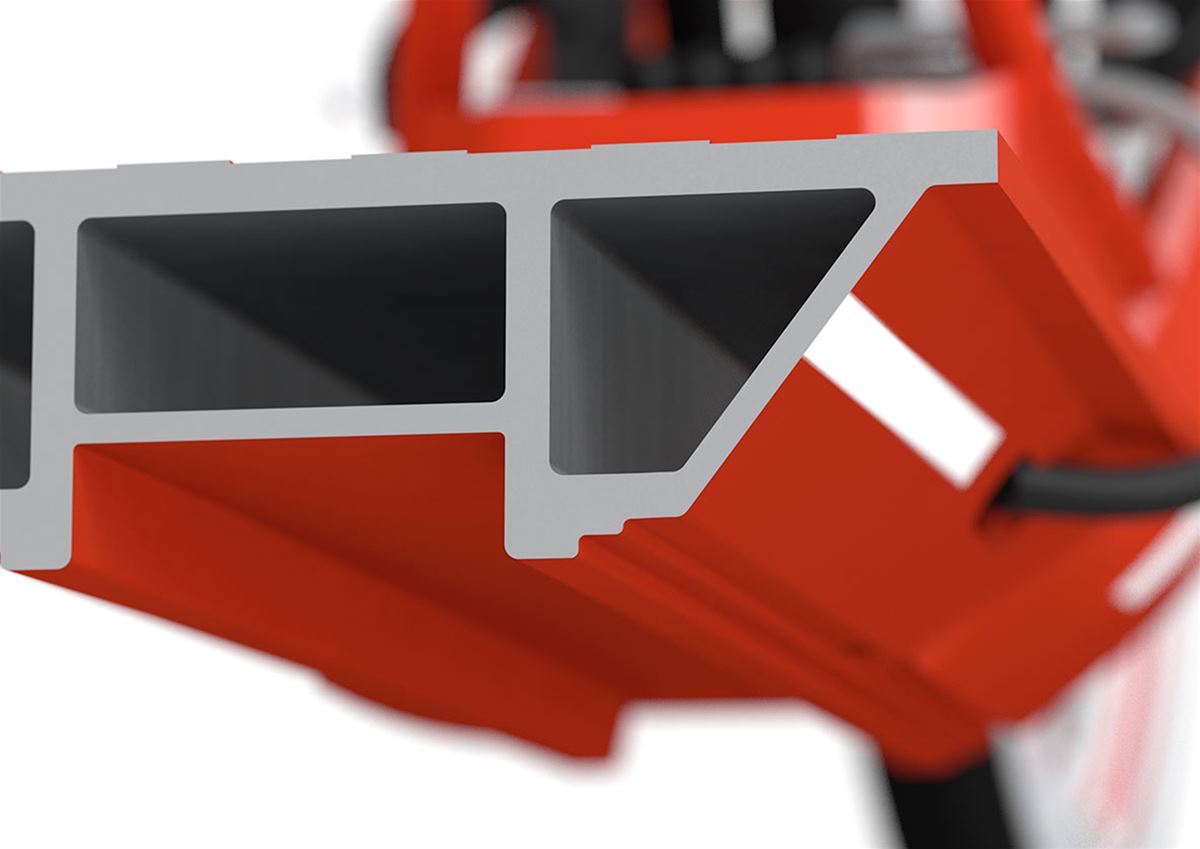
Keep the scooter clean and store it in a dry place
It pays off to keep the scooter clean. By occasionally wiping off mud and dust with a wet cloth, you will make sure dirt is not collected in the moving parts, such as the wheel hubs or the headset, and you will thus ensure their perfect functioning. For immediate and efficient brake effect, the rims of the wheels also need to be perfectly clean and free of grease.
How to store the scooter for the winter
If you want to prepare the scooter for winter or store it in the long term, you should know that it will be best off hanging in the garage or in a dry and shady place. By hanging it up, you will prevent unnecessary overburdening and damage to tyres.
If you are storing the scooter in standing position, inflate the tyres fully, so that they do not get damaged by one-sided burdening. Protect the tyres from sunlight and extreme temperatures as well.
Have you lost the user guide?
Never mind, we have all manuals on the yedoo.cz website for download. You can just look up your scooter model among the products and scroll to its complete technical specifications. When clicking on these, you will find the manual in pdf format.

